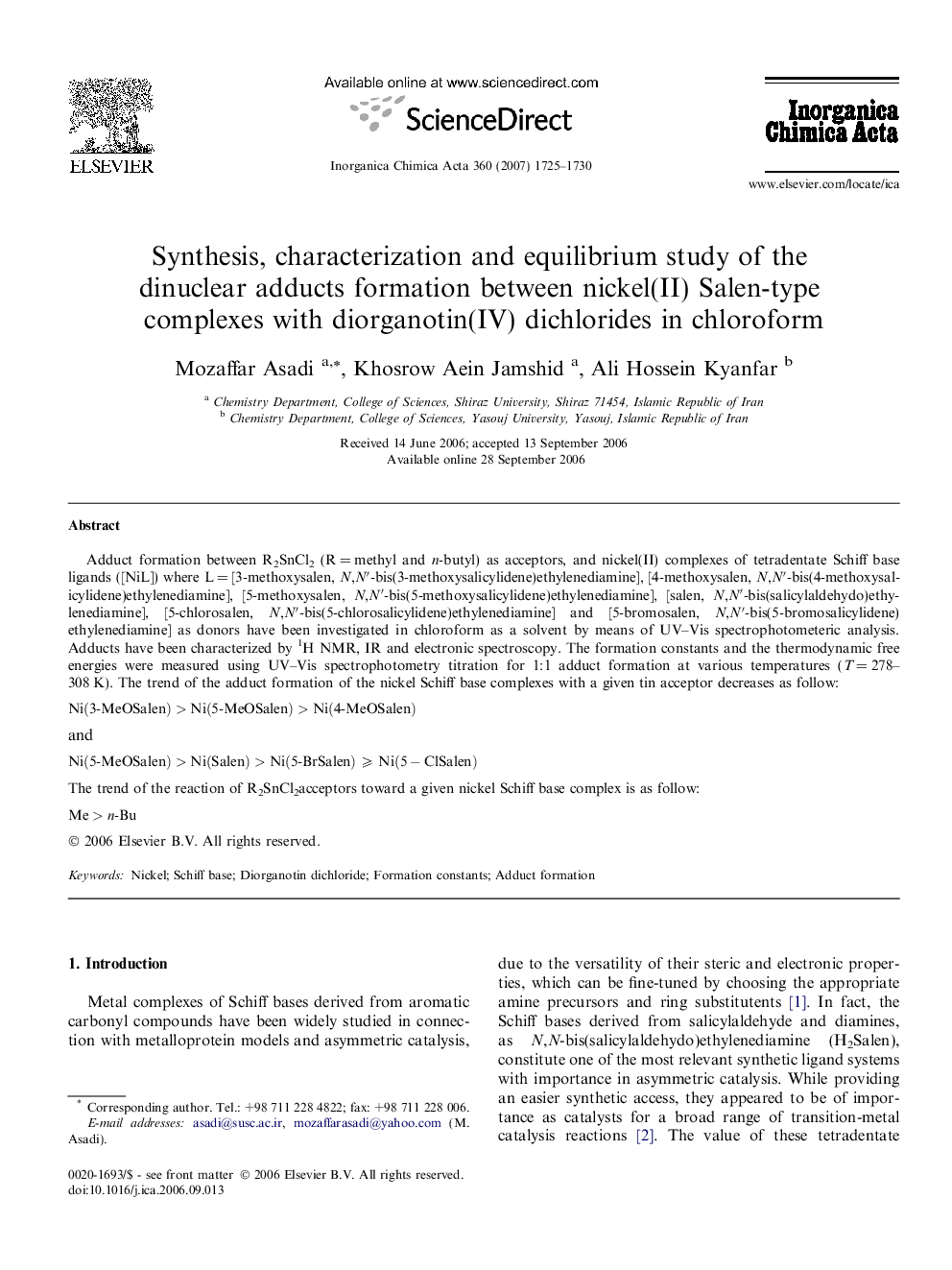| Article ID | Journal | Published Year | Pages | File Type |
|---|---|---|---|---|
| 1311698 | Inorganica Chimica Acta | 2007 | 6 Pages |
Adduct formation between R2SnCl2 (R = methyl and n-butyl) as acceptors, and nickel(II) complexes of tetradentate Schiff base ligands ([NiL]) where L = [3-methoxysalen, N,N′-bis(3-methoxysalicylidene)ethylenediamine], [4-methoxysalen, N,N′-bis(4-methoxysalicylidene)ethylenediamine], [5-methoxysalen, N,N′-bis(5-methoxysalicylidene)ethylenediamine], [salen, N,N′-bis(salicylaldehydo)ethylenediamine], [5-chlorosalen, N,N′-bis(5-chlorosalicylidene)ethylenediamine] and [5-bromosalen, N,N′-bis(5-bromosalicylidene)ethylenediamine] as donors have been investigated in chloroform as a solvent by means of UV–Vis spectrophotometeric analysis. Adducts have been characterized by 1H NMR, IR and electronic spectroscopy. The formation constants and the thermodynamic free energies were measured using UV–Vis spectrophotometry titration for 1:1 adduct formation at various temperatures (T = 278–308 K). The trend of the adduct formation of the nickel Schiff base complexes with a given tin acceptor decreases as follow:Ni(3-MeOSalen)>Ni(5-MeOSalen)>Ni(4-MeOSalen)Ni(3-MeOSalen)>Ni(5-MeOSalen)>Ni(4-MeOSalen)andNi(5-MeOSalen)>Ni(Salen)>Ni(5-BrSalen)⩾Ni(5-ClSalen)Ni(5-MeOSalen)>Ni(Salen)>Ni(5-BrSalen)⩾Ni(5-ClSalen)The trend of the reaction of R2SnCl2acceptors toward a given nickel Schiff base complex is as follow:Me>n-BuMe>n-Bu
Graphical abstractNovel 1:1 adduct formation of diorganotin dichlorides as acceptor with Ni(II) Salen type Schiff base complexes as donor ligands in chloroform solvent.Figure optionsDownload full-size imageDownload as PowerPoint slide
